
Tanks of World War I
If you are a regular reader of our blog, you may know last September I took a trip to France and Belgium to visit some World War I memorial sites and museums.
While the lasting imprint from the images and films of the period was of
trench warfare and the brave soldiers charging over the top into enemy bullets, it
was the stalemate of trench warfare that led to the development of the first tanks
and their use in war.
While the lasting imprint from the images and films of the period was of
trench warfare and the brave soldiers charging over the top into enemy bullets, it
was the stalemate of trench warfare that led to the development of the first tanks
and their use in war.
A vehicle was needed that could pass over deep trenches, break through barbed wire, protect soldiers from bullets and fire weapons at the enemy.
Great Britain and France pioneered the development of tanks while Germany’s first tanks or “Panzer Wagens” came in response to the allies’ introduction of these armoured vehicles to the battlefield.
Great Britain and France pioneered the development of tanks while Germany’s first tanks or “Panzer Wagens” came in response to the allies’ introduction of these armoured vehicles to the battlefield.
In Great Britain the initial design was called “Little Willie”, which was
constructed during August and September of 1915. Only one was ever built, it
became the prototype of what was to become the Tank Mark I. Little Willie can
still be seen at Bovington Tank Museum.
constructed during August and September of 1915. Only one was ever built, it
became the prototype of what was to become the Tank Mark I. Little Willie can
still be seen at Bovington Tank Museum.
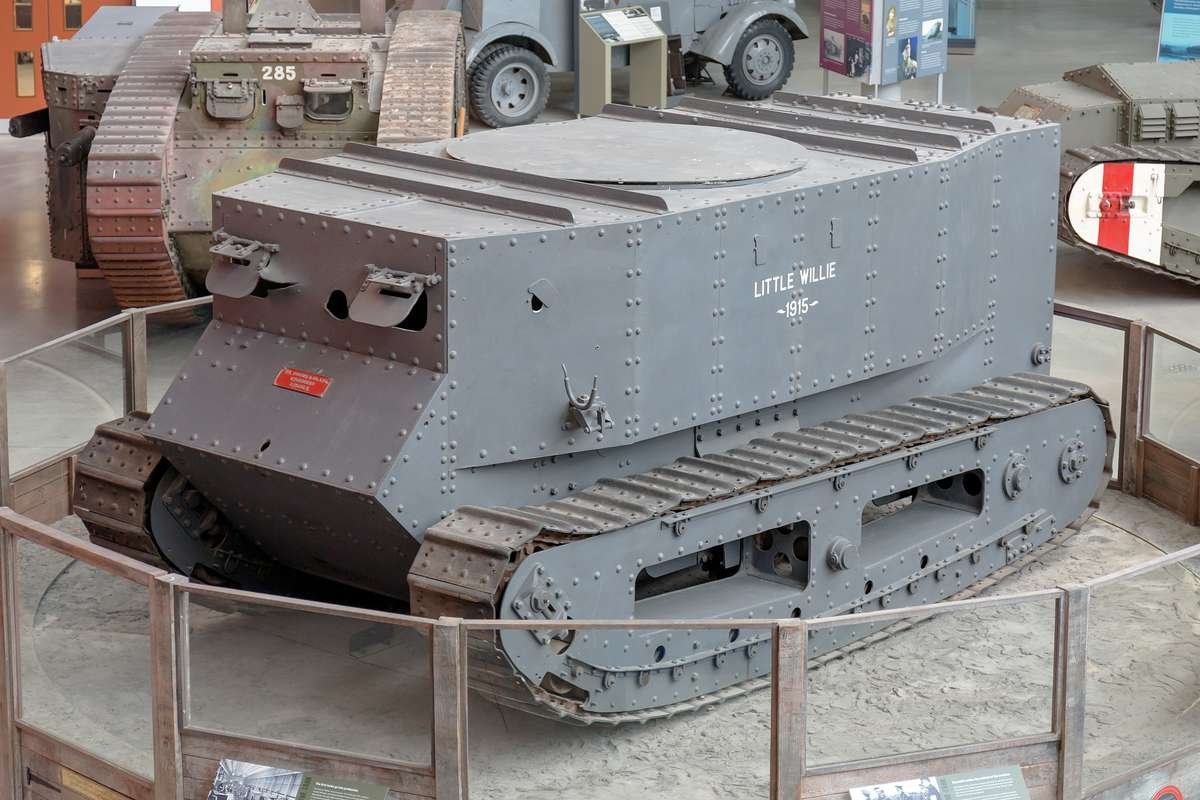
The Mark I was demonstrated to the British Army in February of 1916, initially called
“Landships,” as the committee that was overseeing the development of armoured
fighting vehicles was called the Landship Committee. However, to maintain
secrecy of the development an alternative name was needed. It turned out the
factory workers involved in making the parts called it a “tank” due to it
resembling a water tank. The name stuck and became the common name for these types of military vehicles.
“Landships,” as the committee that was overseeing the development of armoured
fighting vehicles was called the Landship Committee. However, to maintain
secrecy of the development an alternative name was needed. It turned out the
factory workers involved in making the parts called it a “tank” due to it
resembling a water tank. The name stuck and became the common name for these types of military vehicles.
The Mark I was the world’s first tank. Due to the rhomboidal shape and the tracks climbing high up the face of the tank to allow it to cross deep and wide trenches, it
was not possible to have an armed turret which is common on most later tanks,
as this would have made it too tall and unstable. Therefore, sponsons were
attached to each side which contained the weapons. The initial version
nicknamed “Mother” mounted a cannon and machine gun on each side. Later
sub-versions only had the machine guns and were designated “Female”, while the
initial version with both cannon and machine guns were designated “Male”.
was not possible to have an armed turret which is common on most later tanks,
as this would have made it too tall and unstable. Therefore, sponsons were
attached to each side which contained the weapons. The initial version
nicknamed “Mother” mounted a cannon and machine gun on each side. Later
sub-versions only had the machine guns and were designated “Female”, while the
initial version with both cannon and machine guns were designated “Male”.
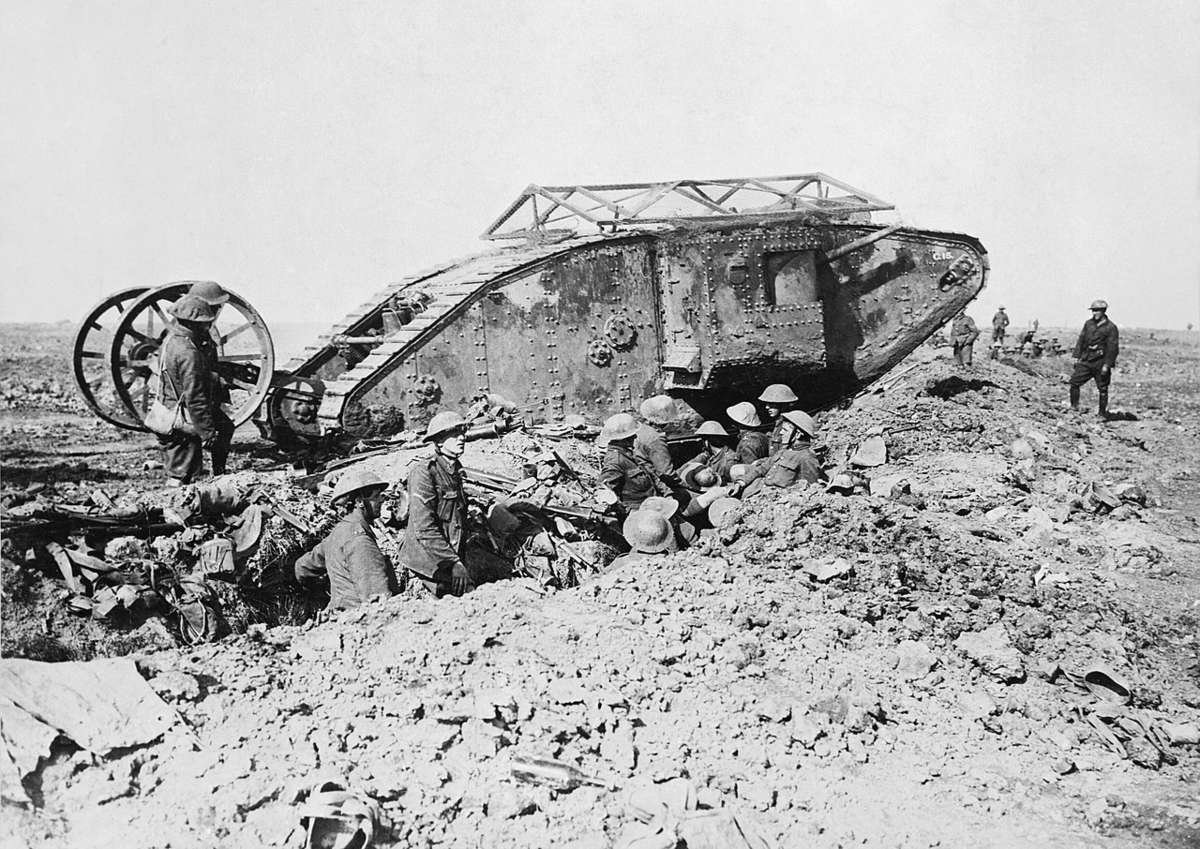
France at the same time was developing their own designs. Unlike Great Britian which had one committee to oversee the development of the Mark I design, in France there were multiple early designs all competing, which lead to three very different tanks. Eventually France would produce more tanks during WWI than all the other nations combined.
The rush to develop the tanks in France lead to some poor designs that were not well equipped for the conditions. The first French tank was the Char Schneider CA, it was equipped with a 75mm Howitzer and it had poor mobility due to its short track length compared to its long body that over hung the tracks in the front and rear, often causing it to get stuck in ditches that were prevalent in the battlefields. Another French design was the heavy Char St Chamond which had better weaponry but shared similar design faults i.e. a body longer than its
tracks.
The rush to develop the tanks in France lead to some poor designs that were not well equipped for the conditions. The first French tank was the Char Schneider CA, it was equipped with a 75mm Howitzer and it had poor mobility due to its short track length compared to its long body that over hung the tracks in the front and rear, often causing it to get stuck in ditches that were prevalent in the battlefields. Another French design was the heavy Char St Chamond which had better weaponry but shared similar design faults i.e. a body longer than its
tracks.
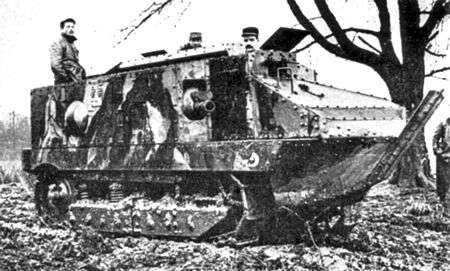
Due to industrial rivalry the renowned French car manufacturer Renault, already
equipped for mass vehicle production, designed and built the Renault FT. Their
design took a different approach to both the British and the other French tank designs which were all large and heavy. In comparison, the Renault FT was the first
small and light weight tank. It was also the first tank to have a top mounted
turret with 360-degree rotation capability.
equipped for mass vehicle production, designed and built the Renault FT. Their
design took a different approach to both the British and the other French tank designs which were all large and heavy. In comparison, the Renault FT was the first
small and light weight tank. It was also the first tank to have a top mounted
turret with 360-degree rotation capability.
The FT was the first modern tank in the sense the driver was at the front of the vehicle, the main armaments in a rotating turret with the engine at the rear.
The earlier British and French designs were basically “box tanks”, with no
compartmentalisation. So, the main area combined the driver’s area, the engine
room, fighting section, ammunition storage all in one crowded space.
The earlier British and French designs were basically “box tanks”, with no
compartmentalisation. So, the main area combined the driver’s area, the engine
room, fighting section, ammunition storage all in one crowded space.
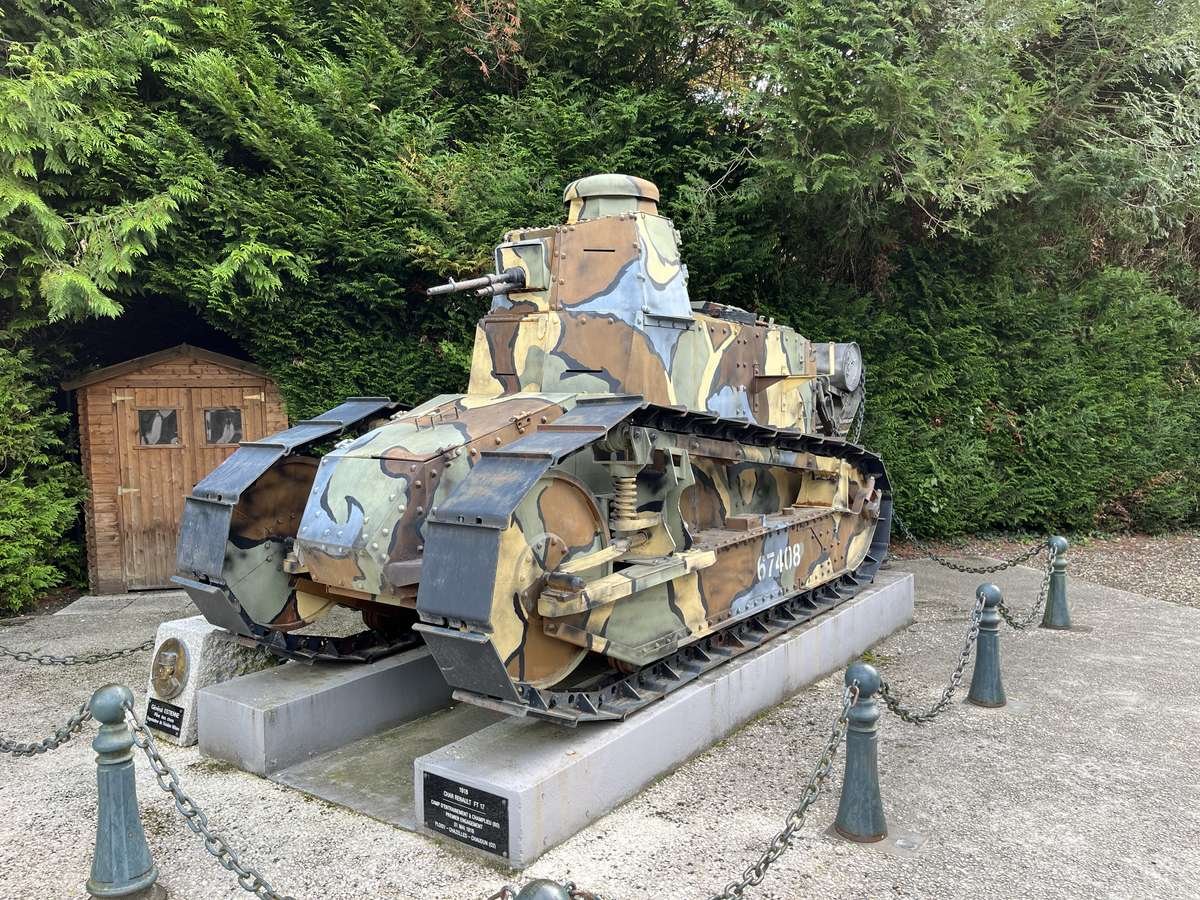
Germany focused on the development of anti-tank weapons. During the course of WWI, they only designed one tank which made it to the battlefields; the A7V
Sturmpanzerwagen. They also captured both French and British tanks and
re-purposed them for their own use.
Sturmpanzerwagen. They also captured both French and British tanks and
re-purposed them for their own use.
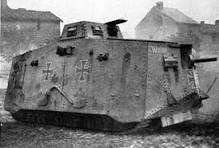
If you want to know more about early tank designs, below are some great resources.
Have a great weekend.
James.
World War I Tanks on Wikipedia
Have a great weekend.
James.
World War I Tanks on Wikipedia
 Skip to content
Skip to content


Tye
very helpful